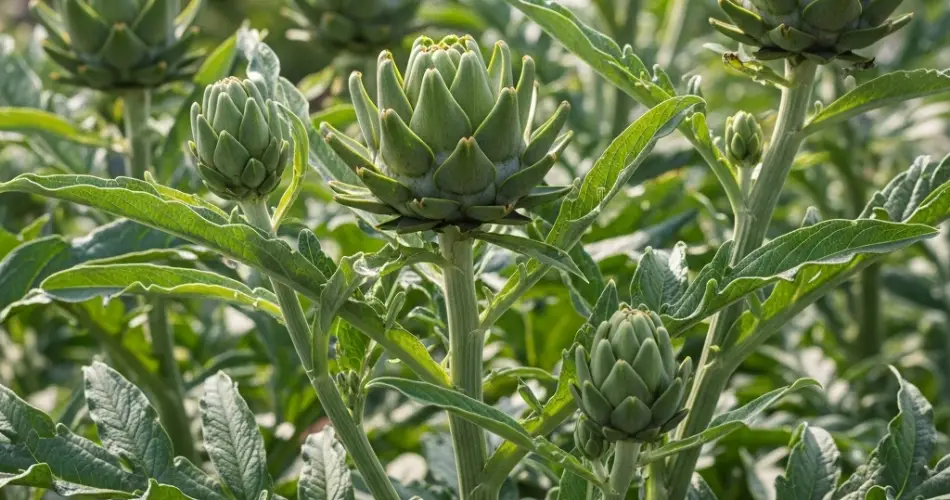The artichoke, often regarded as a culinary curiosity, is actually a flower bud from a species of thistle. Beneath its tough, spiny exterior lies a tender heart that’s beloved by chefs and home cooks alike. From its unique appearance to its impressive health benefits, the artichoke is a vegetable worth getting to know—from garden to table.
A Flower Disguised as Food
The globe artichoke, the most commonly consumed variety, is the edible bud of a large, flowering plant in the thistle family. If left unharvested, it blooms into a striking purple flower. But when picked early, its tightly packed leaves (called bracts) protect a soft heart and a central fuzzy portion known as the “choke,” which must be removed before eating.
Though it may look intimidating at first, preparing and eating artichokes is easier than many people think—and well worth the effort.
A Nutritional Powerhouse
Artichokes are low in calories but rich in fiber, antioxidants, and essential nutrients. One medium artichoke contains roughly 60 calories and delivers about 7 grams of dietary fiber—almost a third of the daily recommended intake. It’s also an excellent source of vitamin C, vitamin K, folate, and magnesium.
Perhaps most notably, artichokes are one of the highest antioxidant-rich vegetables, thanks to compounds like cynarin, silymarin, and luteolin. These antioxidants support liver function, aid digestion, and help protect the body from oxidative stress.
Liver and Digestive Support
Traditionally, artichokes have been used for their liver-supporting properties. They stimulate bile production, which helps break down fats and remove toxins from the body. Cynarin, a key compound in artichokes, is known for its ability to promote healthy cholesterol levels and improve gallbladder function.
Artichokes are also considered a prebiotic food. Their fiber, particularly inulin, serves as food for beneficial gut bacteria, promoting a healthy digestive environment and aiding regular bowel movements.
Heart Health Benefits
Artichokes can play a supportive role in heart health. Their fiber content helps regulate cholesterol by reducing the absorption of LDL (bad cholesterol) in the intestines. Additionally, the potassium in artichokes helps maintain healthy blood pressure levels by balancing the effects of sodium.
With antioxidants, minerals, and anti-inflammatory compounds working together, artichokes offer protective benefits for cardiovascular wellness.
Cooking and Eating Artichokes
There are many delicious ways to prepare artichokes, depending on whether you’re working with whole fresh artichokes or canned, marinated hearts. Whole artichokes can be boiled, steamed, roasted, or grilled. The leaves are typically pulled off one at a time, with the base dipped in a sauce (like garlic butter or aioli) and scraped between the teeth to extract the tender flesh.
Once you reach the center, remove the inedible fuzzy choke to reveal the prized artichoke heart. It’s tender, flavorful, and can be eaten on its own or used in countless recipes.
Here are a few popular ways to enjoy artichokes:
-
Steamed Whole Artichokes: Simple and classic, served with lemon juice, melted butter, or a vinaigrette dip.
-
Stuffed Artichokes: Fill with seasoned breadcrumbs, garlic, and herbs, then bake or steam until tender.
-
Grilled or Roasted Halves: Adds a smoky, caramelized flavor to the outer leaves and heart.
-
Artichoke Hearts in Dishes: Canned or jarred hearts can be added to salads, pastas, pizzas, casseroles, or antipasto platters.
-
Artichoke Dips: Creamy dips made with blended artichoke hearts, cheese, and seasonings are perfect for parties and snacks.
Selecting and Storing Artichokes
When buying fresh artichokes, look for ones that are heavy for their size with tightly closed leaves. The leaves should squeak slightly when rubbed together—a sign of freshness. Avoid artichokes that feel light or have browning or drying edges.
Store unwashed artichokes in the refrigerator, wrapped in a damp paper towel inside a plastic bag. Use them within a week for best results. For convenience, canned or jarred artichoke hearts are a great pantry staple and require no prep work.
Growing Artichokes at Home
Artichokes grow best in mild, frost-free climates, but with a little care, they can thrive in many home gardens. They prefer full sun and well-drained, fertile soil. Because the plants are large and take time to mature, they’re typically grown as perennials in warmer regions or as annuals in cooler areas.
With proper maintenance, one plant can produce several buds throughout the growing season. Not only are they productive, but artichoke plants also have ornamental value, thanks to their impressive size and striking silvery-green leaves.
Bringing Beauty and Nutrition to the Table
Artichokes may not be the most conventional vegetable in the kitchen, but their unique flavor, texture, and health benefits make them well worth exploring. From supporting liver and heart health to offering rich fiber and antioxidants, artichokes are a smart, satisfying choice for health-conscious eaters.
Whether you steam them whole, roast them for depth, or use their hearts in savory dishes, artichokes bring a touch of elegance and nutrition to every meal. With just a bit of preparation, this thistle turns into a true table treasure.



